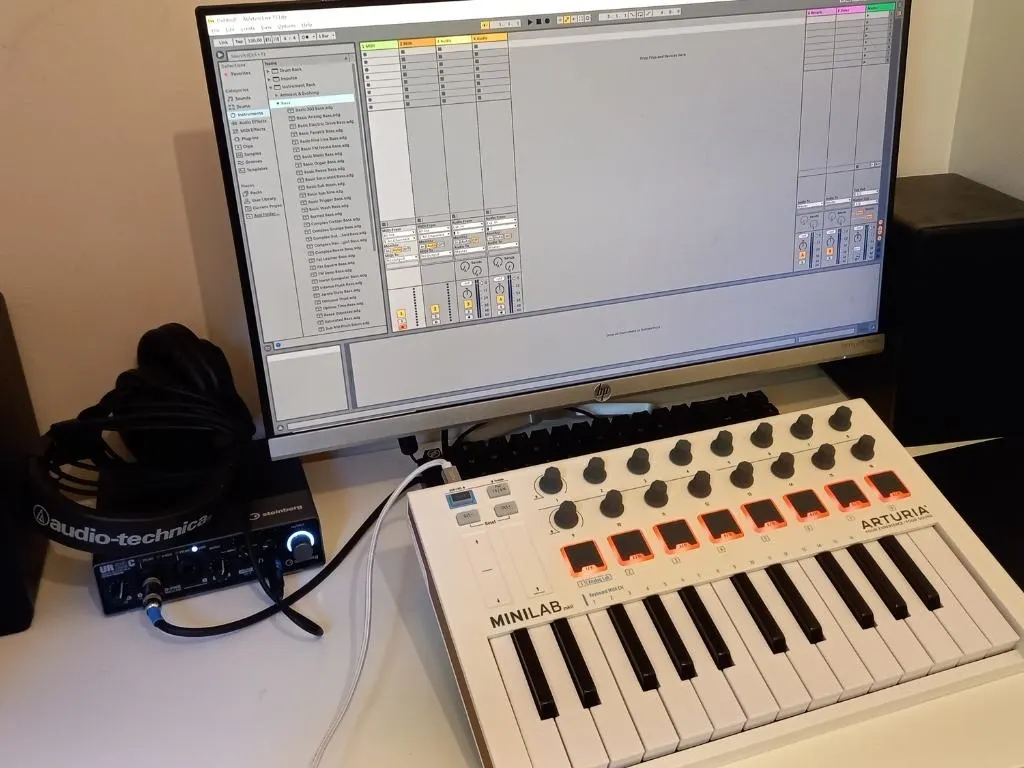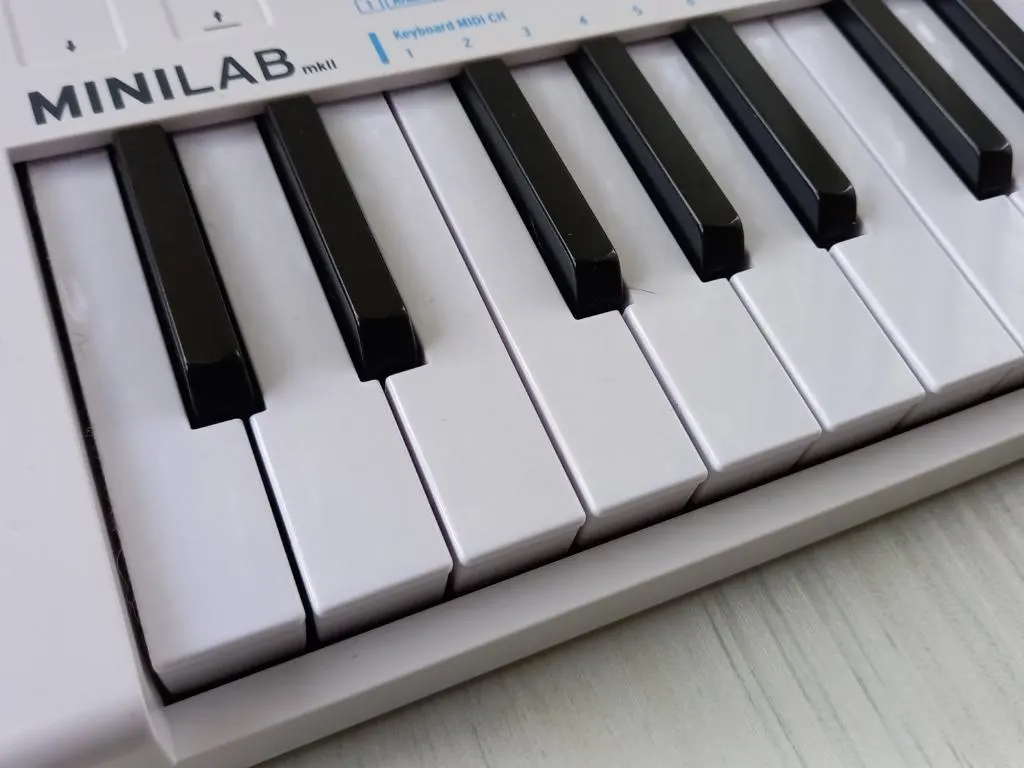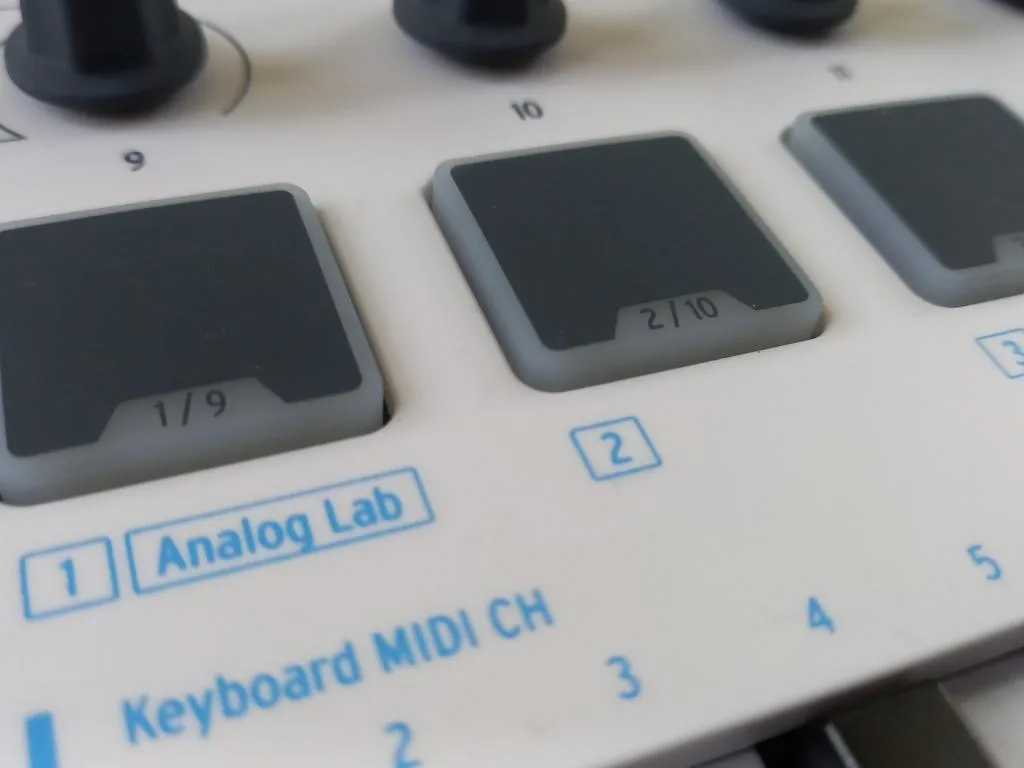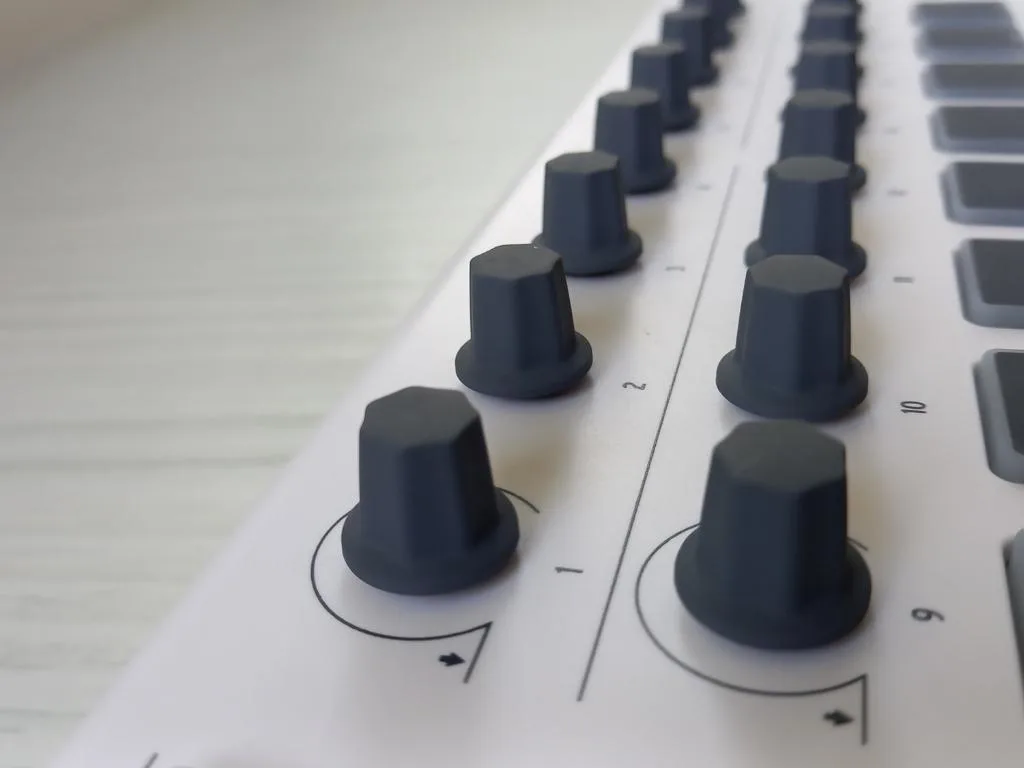MIDI controllers are essential pieces of gear for any musician serious about making music digitally. They have a multitude of uses, from performing, to recording, to editing music.
In this article, I’ll teach you what a MIDI controller is, what they’re used for, and the different parts of a MIDI controller.
Personally, using a MIDI controller made my music production workflow quicker, easier, and better sounding. I use the Arturia MiniLab MK2. You can check it out here on Amazon.
Affiliate disclaimer: This page contains affiliate links for products that I’ve tried and tested. As an Amazon Associate I earn from qualifying purchases at no additional cost to you. Learn more here.
What is a MIDI controller?
A MIDI controller is any device that can send (and usually receive) MIDI data to control other MIDI-enabled devices, used for performing or recording music.
The most common type of MIDI controller used is a MIDI keyboard. That’s why you’ll often hear MIDI controllers called “MIDI keyboards”. These controllers are designed like a standard musical keyboard (the ones with piano-style keys), and usually come with some additional controls such as knobs or pads.
Other common designs of MIDI controllers include:
- Control surfaces: Most often used with a computer running a Digital Audio Workstation (DAW) to trigger loops and samples.
- Instruments: Different instrument designs including drum kits, guitars, and even wind instruments.
- DJ decks: Used for controlling DJ software.
What are they used for?
MIDI controllers have a wide variety of uses, depending on the user’s needs and the controls design.
Playing instruments
The most common use for a MIDI controller is to control either a software instrument on a computer (called a “Virtual Studio Technology”, or “VST”, instrument), or a hardware instrument, like a synthesizer or keyboard.
It’s important to note here that MIDI controllers don’t make any sounds by themselves. They only send data to a connected MIDI-capable device, which then carries out a function.
The MIDI controller tells the instrument what note to play (pitch), how hard to play it (velocity), and for how long (duration).

For example, let’s imagine that I have a MIDI keyboard connected to a synthesizer. When I press the “C” key on the MIDI keyboard, it’ll send a MIDI instruction to the synthesizer. The synthesizer will then play the corresponding “C” note.
If I press the note hard, the sound from the synthesizer will be louder. If I press it softly, the sound will be quieter. Likewise, if I hold the note, it will be longer. If I instantly let go, it will be short.
But, it’s not all about MIDI drum kits, guitars, and wind instruments are less common but are still available. Again, these can control any MIDI-capable device.
Using a MIDI controller means that you can play and record an instrument in real time. If you’re playing a VST instrument, then using a MIDI controller will make it feel more natural and musical to play, compared with manually inputting the notes with a computer keyboard and mouse.
Triggering samples
A lot of people also use MIDI controllers for triggering samples. These samples could be anything, but they’re most commonly different drum hits.
Some MIDI controllers are designed specifically with soft rubber pads that are used to “finger drum” patterns. These pads work exactly the same as the keys mentioned above, they just have a different design to make playing them more intuitive.
This technique is used very commonly by producers in the hip-hop genre, with producers like J-Dilla being famous for their use of MIDI controllers (namely the Akai MPC) for beat making.
Controlling a DAW
Another common use for MIDI controllers is to control the different settings in a DAW.
In most cases, you can assign the buttons on a MIDI controller to control almost anything within a DAW, depending on what you need.
For example, a recording studio engineer might assign the knobs on their MIDI controller to control the volumes of the different tracks within a DAW.
This makes the workflow more convenient and flexible, meaning that the DAW is easier to use, and more intuitive. This saves a lot of time when it comes to recording, and allows for natural, “in-the-moment” adjustments.
Other applications
These aren’t the only things that you can do with a MIDI controller, they’re just the most common. MIDI controllers are very versatile and can be used for a lot of different uses. Remember, all they do is send an instruction to another device.
Some music venues even use MIDI controllers to trigger lighting and audio changes. The possibilities really are endless.
The different parts of a MIDI controller
As I’ve said, MIDI controllers come in lots of different shapes and designs, but they do have some similarities. So, let’s take a look at the most common features that you’ll find on a MIDI controller.
Piano-style keys
As you’d expect, these are only found on MIDI keyboards. Like the keys on a piano, they’re mostly used for playing notes and chords.

Most keys send pitch, velocity, and duration data, allowing you to create a natural sound from the connected instrument.
Pads
MIDI controllers like control surfaces, drum kits, and some MIDI keyboards include rubber pads. These pads are mostly used for triggering samples by being struck with a stick (for MIDI drum kits) or “finger drummed”.

They can also be assigned to different functions, like switching between instruments at the touch of a button.
Knobs, sliders, and buttons
Knobs, sliders, and buttons can be assigned to do almost anything. They’re usually used within a DAW to turn up volume, change the amount of an effect, cycle through different instruments… really, anything that you want them to do.

They provide a tactile way to interact with virtual equipment, making your computer feel more responsive as an instrument, and less like a computer!
Some controls have a more specific use, like the pitch and modulation wheels included on most MIDI keyboards. Although, these can also be reassigned to control pretty much anything!
Do you need to use a MIDI controller?
If you’re looking to make music on a computer, then a MIDI controller is a must.
Technically, you could use a regular QWERTY keyboard and mouse, but it’s incredibly difficult. It will take you much longer, and it won’t sound as good.
If you’re just getting started, I recommend picking up an affordable MIDI controller.
The main benefit of a MIDI controller is that it will drastically speed up your workflow, and playing your instruments will feel and sound more natural. It’s not an exaggeration to say that a MIDI controller will transform the way you make music.
How do I know? Because, it happened to me!
I actually started making music by using my computer’s QWERTY keyboard, but it was a terrible. The music didn’t have any expression, it was awkward to record, and it took forever to edit. It took so long, and sounded so bad, that it put me off making music.
So, I picked up a MIDI keyboard for less than $100, and my workflow immediately changed.
My VST instruments sounded more natural. I could record in seconds as opposed to minutes. It felt like I was making music, not just clicking away at a computer.
If you’re looking for a recommendation, I use the Arturia MiniLab MK2. It’s a very popular MIDI keyboard for beginners, as it’s a good size, very well-built, and comes with keys, pads, and knobs – so there’s a lot of functionality built in. It’s also very budget friendly too, coming in at under $100.
You can check out the latest price here on Amazon.

Conor is a music producer, multi-instrumentalist, and all-round enthusiast from the UK with over 15 years of experience. He’s the founder and sole-content creator for the roundtable audio blog and YouTube channel.
